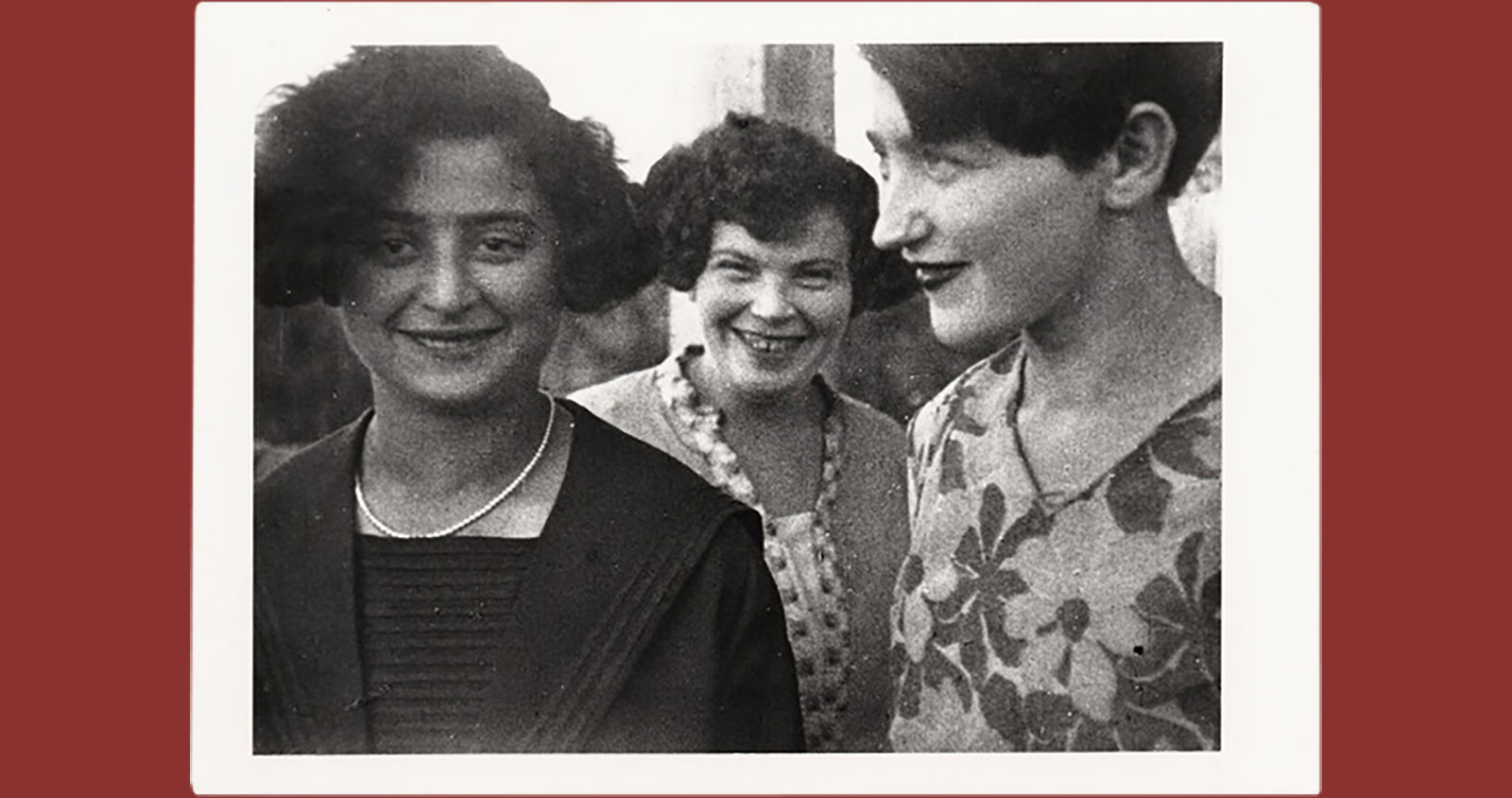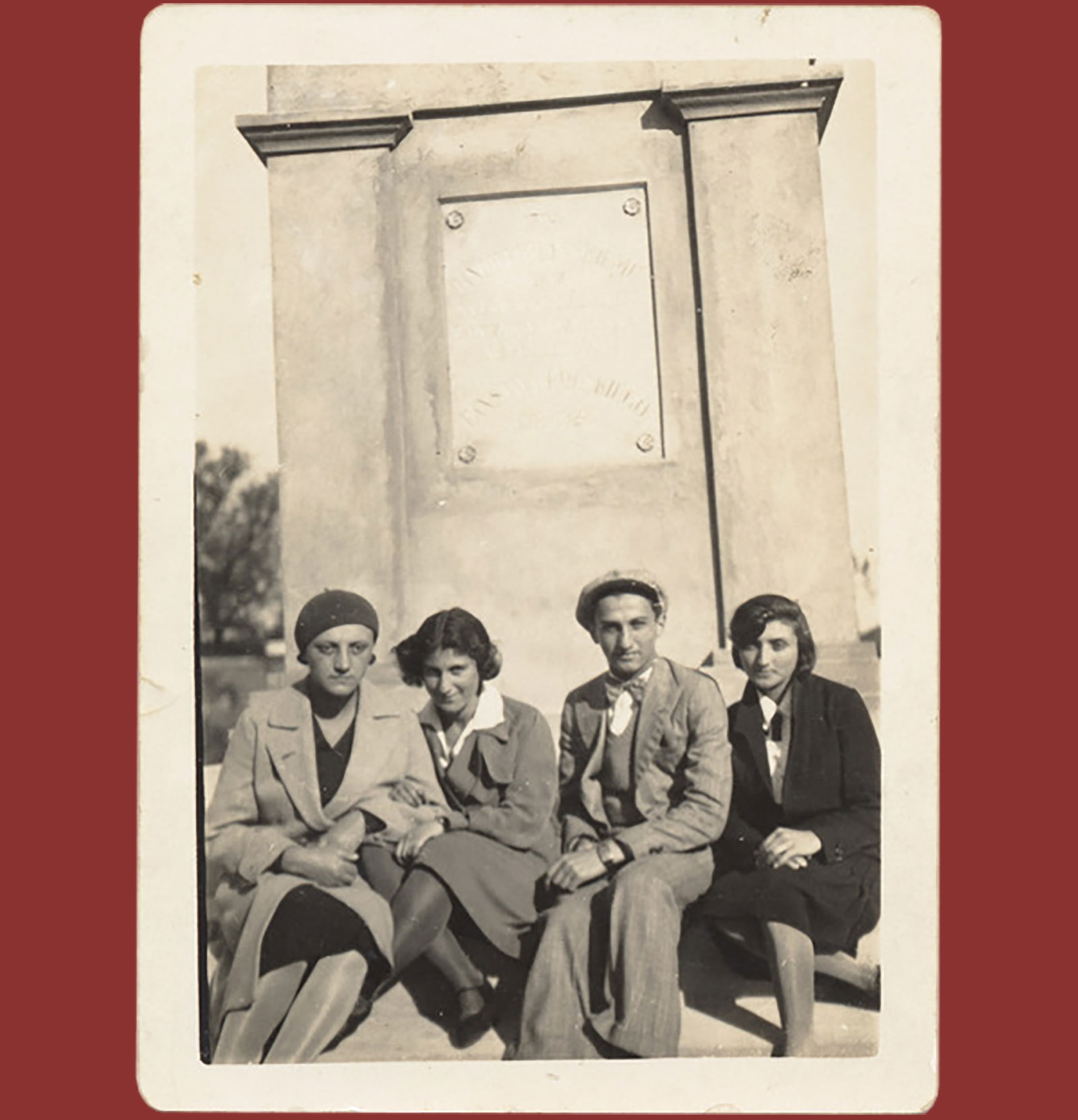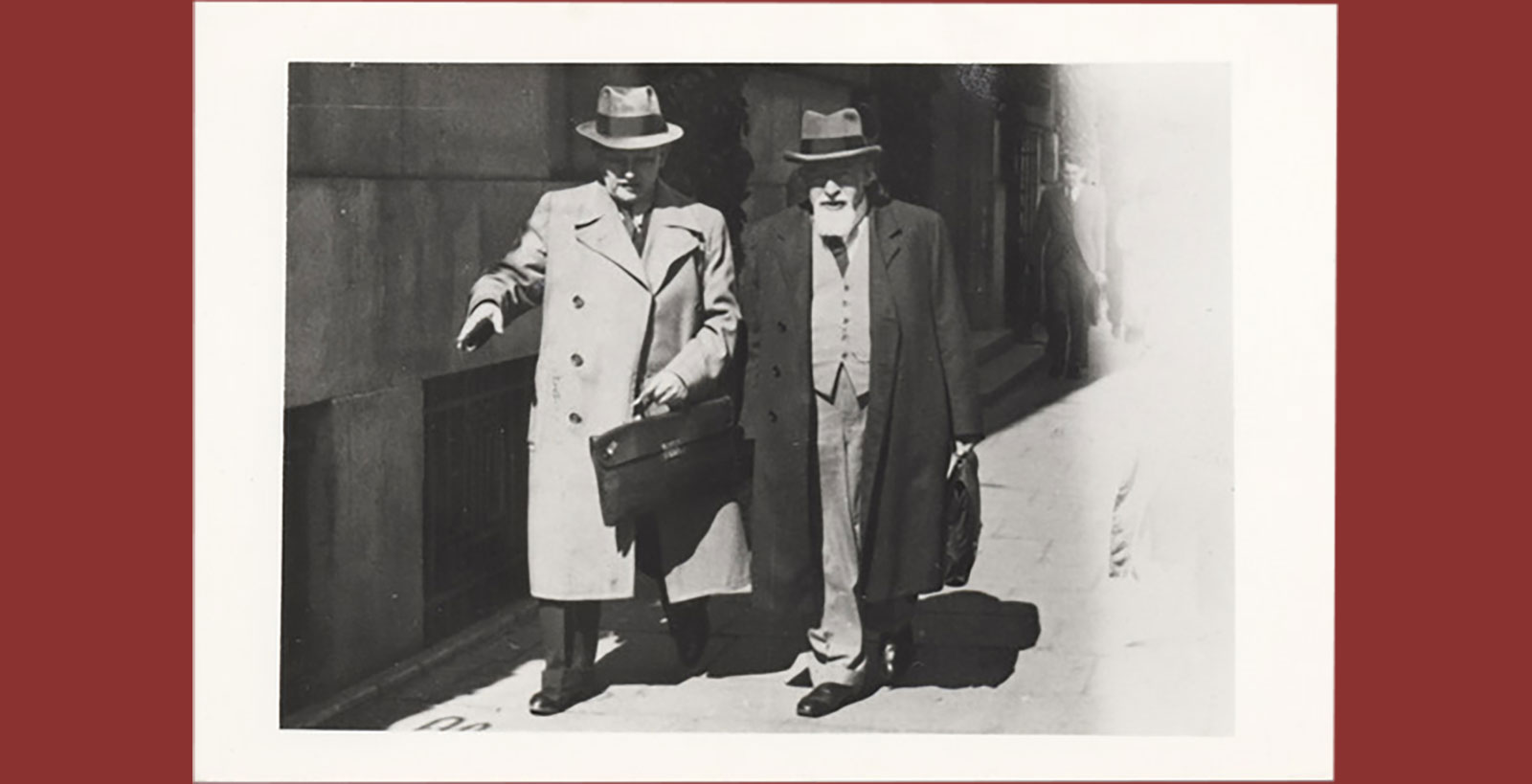Are they Jewish?
This man doesn’t have peyes, the sidelocks that some Orthodox Jewish men wear. So, he could either be a secular Jew or a non-Jew.
This woman is not wearing a headscarf or a wig. So she could be a secular Jew, a non-Jew, or even an unmarried Orthodox Jewish woman.
This man doesn’t have peyes, the sidelocks that some Orthodox Jewish men wear. So he could be either a secular Jew or a non-Jew. Fashion at the time was quite similar for
Orthodox and secular Jewish men, as well as for non-Jews. All men wore dark coats and hats. Therefore, the peyes often provided the only sign that a man was Jewish.
It is important to note that in Vilna, the capital of misnagdic (non-Hasidic orthodoxy) learning,
beards were not obligatory and visible peyes were less common.
This woman is not wearing a headscarf or a wig. So, she could be a secular Jew, a non-Jew, or even an unmarried Orthodox Jewish woman. Only married Orthodox Jewish
women were obliged to cover their hair with wigs or a headscarf in observance of religious laws of modesty. Women's fashion at the time was quite similar for Orthodox
and secular Jewish women, as well as for non-Jews. All women wore modest clothing that covered more of their bodies, as well as hats. It was also not uncommon for Orthodox
Jewish women to wear colorful clothing. They didn’t only wear black. That means the only sign that a woman was an Orthodox Jew was often a head covering. Therefore, it was
really hard to say who was Jewish or not just by looking at a person passing by on a street.
In the 1930s approximately 40% of Vilna’s population was Jewish, and a third to a half were Orthodox Jews.


